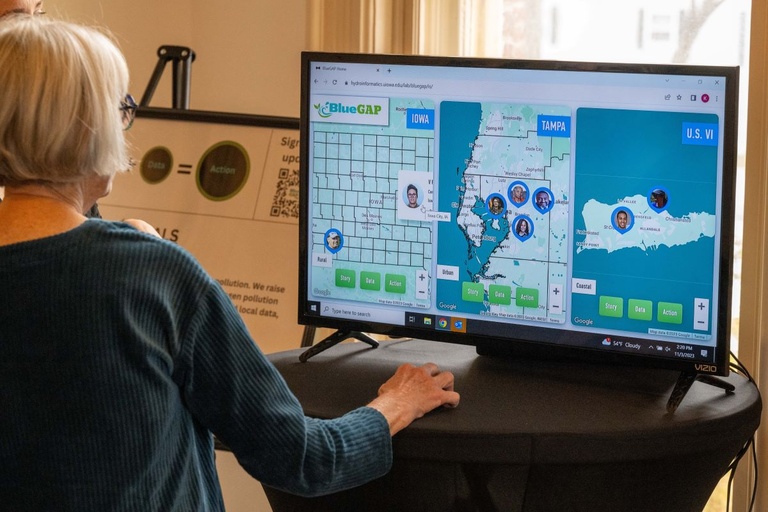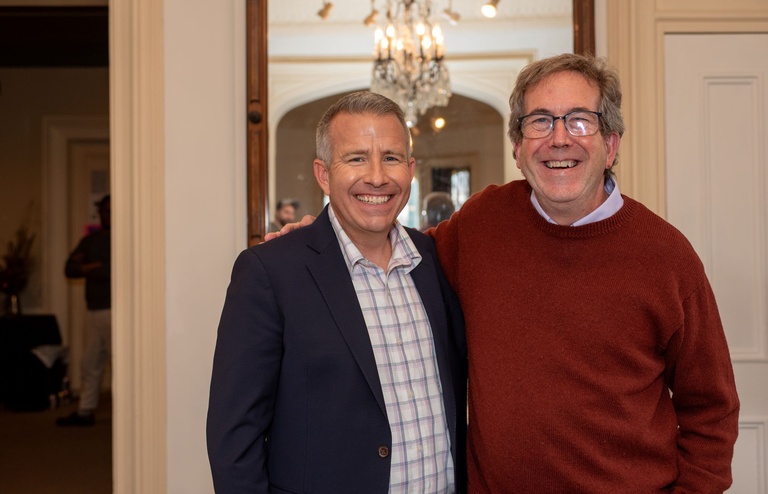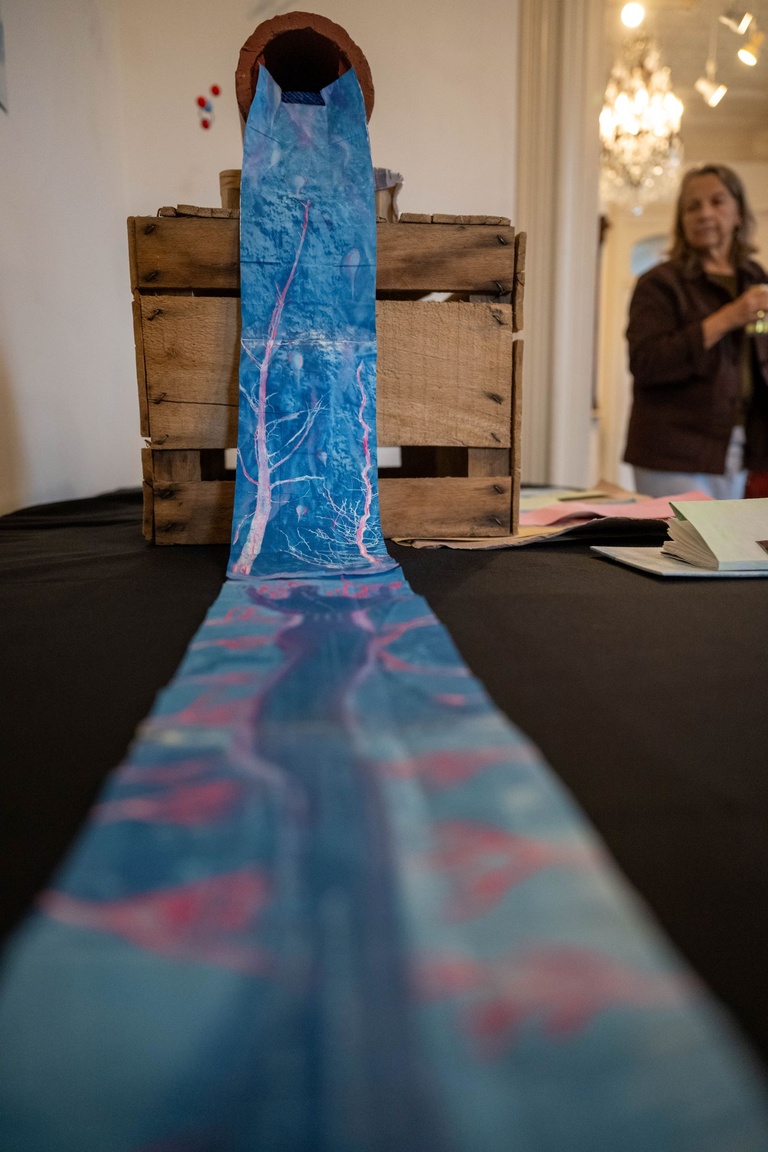The art and science of nitrogen pollution
A new collaboration between engineering and the arts and humanities at the University of Iowa leverages artists, writers, and scholars to put a face on the impacts of nitrogen pollution in waterways and watersheds.
“This project gives voice and narrative to those impacted,” says David Cwiertny, William D. Ashton Professor of Civil Engineering and IIHR faculty research engineer. “How do we make this real? We bring people to the issues through art, dance, creative writing, papermaking.”
Cwiertny is the Iowa lead on the National Science Foundation project called the Blue-Green Action Platform, or BlueGAP, which aims to connect communities across watersheds to address economic and health challenges caused by nitrogen pollution in their water and local environment.
The BlueGAP project came to life as six graduate students from the arts and humanities were featured in Fluid Impressions: A Water Quality Exhibition, held in Iowa City.
The projects used ceramics and choreography, journalism and creative writing, critical cartography, papermaking, and book arts to explore community issues, reflect on the importance of preserving natural resources in places we call home, and gain insight from personal stories and experiences.
“The hope in telling the stories in diverse ways is to provide people with actionable information to become more engaged,” Cwiertny says.
Eric Gidal, an English professor at Iowa, is leading the arts and humanities contributions to the project. Too often, understanding and solving environmental problems are left to the sciences. The arts and humanities should also have a critical role in the solutions, says Gidal.
“This is an ideal model of what humanities, sciences, and the arts can do together,” says Gidal. “What we are doing alone is not enough.”
Richard Frailing, a second-year graduate student in the Nonfiction Writing Program, originally from Norfolk, Virginia, created a series called “Flyover Country.” It features three “drone essays,” which form a triptych — a piece composed or presented in three parts or sections.
Overhead video footage is overlaid with Frailing’s narration and music. In it, Frailing contemplates what constitutes beauty and how choices are made in managing land. His commentary is informed by interviews with farmers as well as previous work at Iowa State University Extension, where he educated the public about natural resource concerns and wrote about the perspectives of conservation farmers.
“It became apparent that there was a lack of communication between the upstream Midwest and downstream Gulf communities’ nutrient pollution and related water-quality concerns,” says Frailing. “BlueGAP, as far as I know, is the clearest example of an academic partnership between opposite ends of the Mississippi watershed.”
The Mississippi River and its tributaries carry nutrients such as nitrogen and phosphorus from lawns, sewage treatment plants, farmland, and other sources into the Gulf of Mexico, creating the so-called “dead zone” that threatens seafood production, recreation, and marine life.
“This isn’t meant to demonize farmers, but to make their choices relatable,” says Frailing. “Aesthetics — among many other values — affect all our choices. Thus, art’s power is both to explicitly connect disparate threads — such as the value of uniform landscapes to water quality — and to synthesize them in a way that is both evocative and provocative.”
A second cohort of art and humanities students will join the project in the summer of 2024 to further bridge connections between engineering and the arts to inspire conversations and action around nitrogen pollution.




